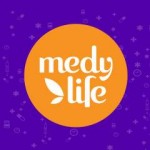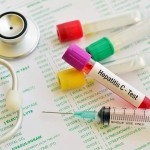Stroke
Stroke (also known as Brain Attack) occurs when blood supply to brain is blocked due to a clot. It may also occur due to bursting of a blood vessel surrounding the brain, thereby, causing brain damange or death.
Types of Stroke:
Ischemic Stroke: About 85% of all strokes are ischemic, in which blood flow to the brain is blocked by blood clots or fatty deposits (also known as plaque) in blood vessel linings.
Hemorrhagic Stroke: It occurs when a blood vessel bursts in the brain. Blood accumulates and compresses the surrounding brain tissue.
Intracerebral hemorrhage: It is the most common type of hemorrhagic stroke. It occurs when an artery bursts in the brain, flooding the surrounding tissue with blood.
Subarachnoid hemorrhage: It occurs when there is a bleeding in the area between the brain and the thin tissues that cover it.
Transient ischemic attack (TIA) is a “warning stroke” or a “mini-stroke” that results in no lasting damage. Recognizing and treating TIAs immediately can reduce your risk of a major stroke.
Symptoms
Stroke can affect any senses, speech, behavior, thoughts, memory, and emotions. The body may become weak or even paralyzed.
The five most common symptoms of Stroke are:
• Numbness or weakness of the face, arm, or leg
• Confusion or trouble in speaking or understanding others
• Difficulty in vision
• Dizziness, difficulty in walking or loss of balance or coordination
• Severe headache with unknown cause
Causes
Stroke is associated with risk factors like:
• Family history
• Old age
• High blood pressure
• High cholesterol
• Common heart disorders
• Smoking ( as it injures the blood vessels and speeds up the hardening of the arteries)
• Consuming excessive alcohol (as it increases the blood pressure)
Diagnosis
CT scans and MRI
Two common methods used for brain imaging are Computer Tomography (CT) scan and a Magnetic Resonance Imaging(MRI) scan.
A CT scan is like an X-ray, but uses multiple images to build up a more detailed, three-dimensional (3D) picture of brain.
An MRI scan uses a strong magnetic field and radio waves to produce a detailed picture of body.
Swallowing test:
A swallow test is essential for a person who has had a stroke. When a person cannot swallow properly, there is a risk that food and drink may enter the windpipe and then into the lungs (called aspiration), which may lead to chest infections and pneumonia.
Certain other tests carried out generally to diagnose stroke are as follows:
Ultrasound (Carotid Ultrasonography)
An ultrasound scan uses high frequency sound waves to produce an image of the body. Doctor may use a wand-like probe (transducer) to send high-frequency sound waves into neck. These pass through the tissue creating images on a screen that shows if there is any narrowing or clotting in the arteries leading to brain.
This type of ultrasound scan is sometimes also known as a "Doppler Scan" or a "Duplex Scan". Carotid Ultrasonography if required, should be done within 48 hours.
Catheter angiography (Arteriography)
Dye is injected into carotid or vertebral artery via a tube called a catheter. This gives a more detailed view of arteries than can be obtained using ultrasound, CT angiography or MR angiography.
Echocardiogram
In some cases an echocardiogram may be used to produce images of heart using an ultrasound probe placed on chest (transthoracic echocardiogram). In addition, transoesophageal echocardiography (TOE) may also be used. This involves an ultrasonic probe which is passed down the food pipe (esophagus), usually under sedation. Because it's directly behind the heart, it produces a clear image of blood clots and other abnormalities that may not get picked up by the transthoracic echocardiogram.
Treatments
Stroke can be managed through Tissue Plasminogen Activators (tPA) that can break blood clots in the arteries of brain. A doctor will inject tPA into a vein of your arm. This medicine must be given within 4 hours of the onset of symptoms.
Hemorrhagic stroke
Treatment for hemorrhagic stroke includes efforts to control bleeding, reduce pressure in the brain, and stabilize vital signs, especially blood pressure.
Patient should be closely monitored for signs of increased pressure on the brain, such as restlessness, confusion, difficulty in following commands, and headache. Other measures should be taken to keep the patient away from straining due to excessive coughing, vomiting, lifting and passing stool.
In some cases, medicines may be given to control blood pressure, brain swelling, blood sugar levels, fever and seizures.
Surgery, if needed may include aneurysm clipping, coil embolization and arteriovenous malformation (AVM) repair.
Complications
There are complications that can arise as a result of stroke, many of which are life-threatening. Some of these complications are as follows:
Dysphagia:
The damage caused by a stroke can interrupt normal swallowing reflex, making it possible for small particles of food to enter the respiratory tract (windpipe). Difficulty in swallowing is known as dysphagia. It can also lead to damage of lungs that can trigger a lung infection (pneumonia).
Hydrocephalus:
Hydrocephalus is a condition that occurs when there is too much cerebrospinal fluid in the cavities (ventricles) of the brain. About 10% of people who experience a hemorrhagic stroke will develop hydrocephalus.
Deep Vein Thrombosis (DVT):
Some people with the stroke might experience a further blood clot in their leg, known as Deep Vein Thrombosis (DVT). This normally occurs in people who have lost partial or complete control of movement in their legs. Immobility will slow the blood flow in their veins thereby, increasing blood pressure and the chances of a blood clot.
References:
US National Library of Science
NHS
WHO
CDC








